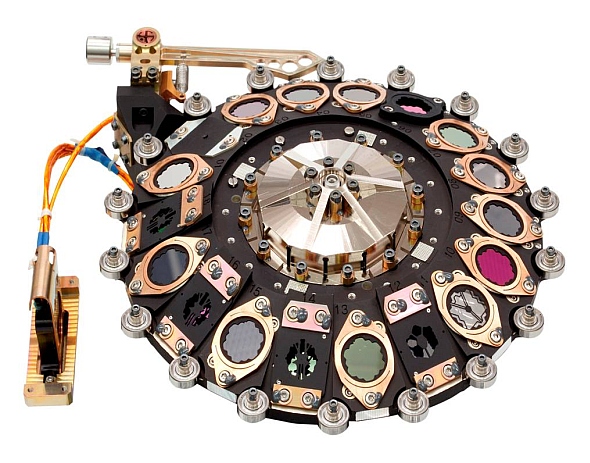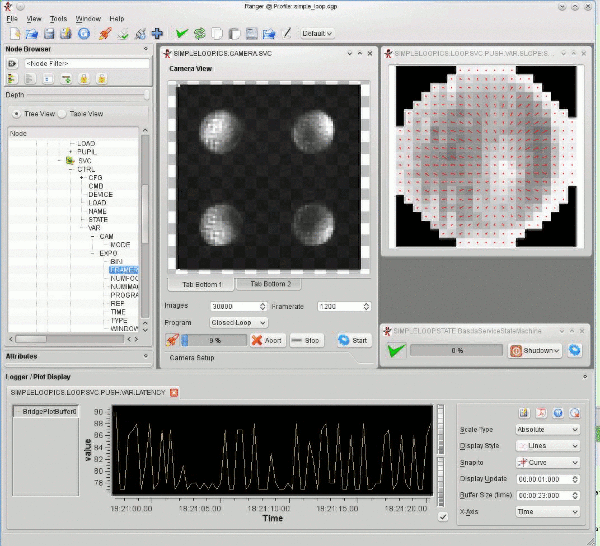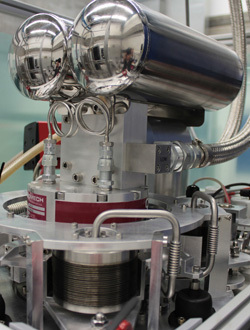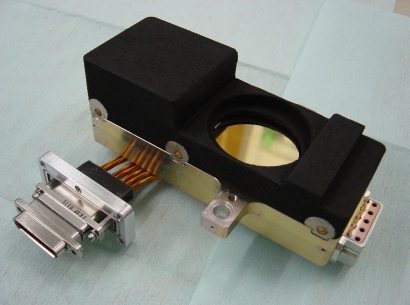| Version 342 (modified by , 6 years ago) (diff) |
|---|
The AstroTechTalk (ger) offers a place to discuss, for all interested colleagues and especially for the technical departments, the project leaders, the administration and the scientists as the ultimately users:
- status of instrumentation projects
- scientific tasks and features of the instruments in construction or planned
- new possible involvements
- technical innovations and developments
- technical problems and their solutions
- logistical problems and their solutions
- how to improve operation and observation
- project standards.
Time: Always Fridays 11:00 - 12:00 (during the construction work: 10:00 - 11:00)
Location: MPIA Hörsaal (during the construction work: HdA Auditorium)
Outline:
- Announcements (news, visitors, etc.) (mainly in German)
- Talk of about 30 min about a selected topic (German or English, will be announced)
- Follow up discussion and questions (German or English, depending on the speaker)
Proposals for talks: Please send an email to "hofferbert -at- mpia.de" or "naranjo -at- mpia.de" - alternatively you might reach us by phone (06221-528209 or -290) or in person (room 211 or 018) at MPIA.
| Date | Speaker | Topic |
| 02.02.2018 (10hrs, HdA) | Joachim Wolf (KIT-ETP) | KATRIN - the "Karlsruher Tritium Neutrino Experiment" Apart from photons, neutrinos are the most abundant particles in the universe. Therefore even the small neutrino mass has an impact on the evolution of the visible universe. And also in particle physics the neutrino mass is an important parameter. The observation of neutrino oscillations confirmed for the very first time that neutrinos have a mass. But, those experiments only allow to measure the difference of squared mass values of the different neutrino generations, i.e. absolute mass values cannot be deduced. A model independent method to determine the neutrino mass is the precise measurement of the beta spectrum of a radioactive decay. Goal of the KATRIN experiment, which is currently commissioned at the "Karlsruher Institut für Technologie" (KIT), is the determination of the neutrino mass, more specifically, the effective mass of electron anti-neutrinos in the decay of molecular tritium gas. A finite neutrino mass would lead to a tiny change in the form of the beta spectrum at its kinematic endpoint of 18,6 keV, which has to be measured with high precision. Since only about 2 x 10-13 of all beta electrons possess an energy in the last eV below this endpoint, the source requires a high intensity. With a sensitivity of mn = 0.2 eV/c2, KATRIN will improve all previous limits of tritium measurements by a factor of 10. The complete setup of the KATRIN experiment has a total length of 70 m and can be divided into two main areas: In the source and transport range the tritium decay is happening (~1011 Bq), the electrons are guided to the spectrometer range using super conducting magnets and the remaining tritium gas is pumped with such a high efficiency that only a fraction of less than 10-14 of the original amount of gas reaches the spectrometer. Finally, in this spectrometer and detector area the energy of the electrons is measured with highest precision. This happens in the main spectrometer with 10m of diameter and 23m of length, comprising an ultra-high vacuum of 10-11 mbar in a volume of 1240 m3. For the energy measurement the so-called MAC-E filter technique is applied using an electrostatic high-pass filter, which only allow electrons above a certain voltage threshold to reach the detector, and finally getting counted. The talk explains the measurement of the neutrino mass and the KATRIN experiment and discusses the technological and physical challenges. Presentation: German Slides: English Questions: German, English |
| 09.02.2018 (10hrs, HdA) | ||
| 16.02.2018 (10hrs, HdA) | Robert Harris (ZAH-LSW) | Astrophotonics The field of Astrophotonics bridges the gap between the small mass-produced devices manufactured for the telecommunications industry and large one-off astronomical instruments. In this talk Robert Harris will summarise the developments in the field, the technologies that made this possible and some of the successes. He will examine where these technologies could be of use and some of the future devices which could be manufactured. Presentation: German Slides: English Questions: German, English |
| 23.02.2018 (10hrs, HdA) | Ernest Michael (Universidad de Chile) | Heterodyne Wavefrontsensor |
| 02.03.2018 (10hrs, HdA) | Gabriele Rodeghiero | The MICADO Calibration Assembly (MCA) |
| 09.03.2018 (11hrs, MPIA Hoersaal) | Joerg Wagner (ISD, University of Stuttgart) | J.G.F. Bohnenberger: Astronomer, Geodesist and Inventor of the Gyroscope Johann Gottlieb Friedrich Bohnenberger (1765-1831) was a professor of physics, mathematics, and astronomy at the University of Tuebingen, the scientific head surveying officer of the early Kingdom of Wuerttemberg, and an important German astronomer of the 19th century. He made both major contributions to introducing modern geodesy in Germany and invented various physical instruments. The "Machine of Bohnenberger" is considered the first gyro with cardanic suspension and forms the precursor of Foucault’s Gyroscope of 1852. This presentation discusses this apparatus as well as the life and the scientific work of J.G.F. Bohnenberger. Presentation: German Slides: English Questions: German, English |
| 16.03.2018 (10hrs, HdA) | Klaus Meisenheimer | MATISSE on Paranal |
| 23.03.2018 (10hrs, HdA) | Peter Bizenberger | The ELT METIS Imager |
Preview:
TBD - Name: Title
Postview:
Presentations from 12.09. - 31.12.2014
Presentations from 01.01. - 31.07.2015
Presentations from 01.08. - 31.12.2015
Presentations from 01.01. - 31.07.2016
Presentations from 01.08. - 31.12.2016
Presentations from 01.01. - 31.07.2017
Attachments (11)
- instrum8_gr.jpg (82.6 KB) - added by 10 years ago.
- instrum4_gr.jpg (104.4 KB) - added by 10 years ago.
- pedv3_gr.jpg (213.9 KB) - added by 10 years ago.
- alfa3.5.gif (235.6 KB) - added by 10 years ago.
- CIAO.jpg (3.8 MB) - added by 8 years ago.
- linc_nirvana_labor.jpg (255.2 KB) - added by 8 years ago.
- MATISSE.jpg (43.1 KB) - added by 8 years ago.
- miri_fm_filterwheel.jpg (145.6 KB) - added by 8 years ago.
- PACS-Chopper.jpg (80.0 KB) - added by 8 years ago.
- simple_loop.gif (965.4 KB) - added by 8 years ago.
- teaser.jpg (13.5 KB) - added by 8 years ago.
Download all attachments as: .zip







